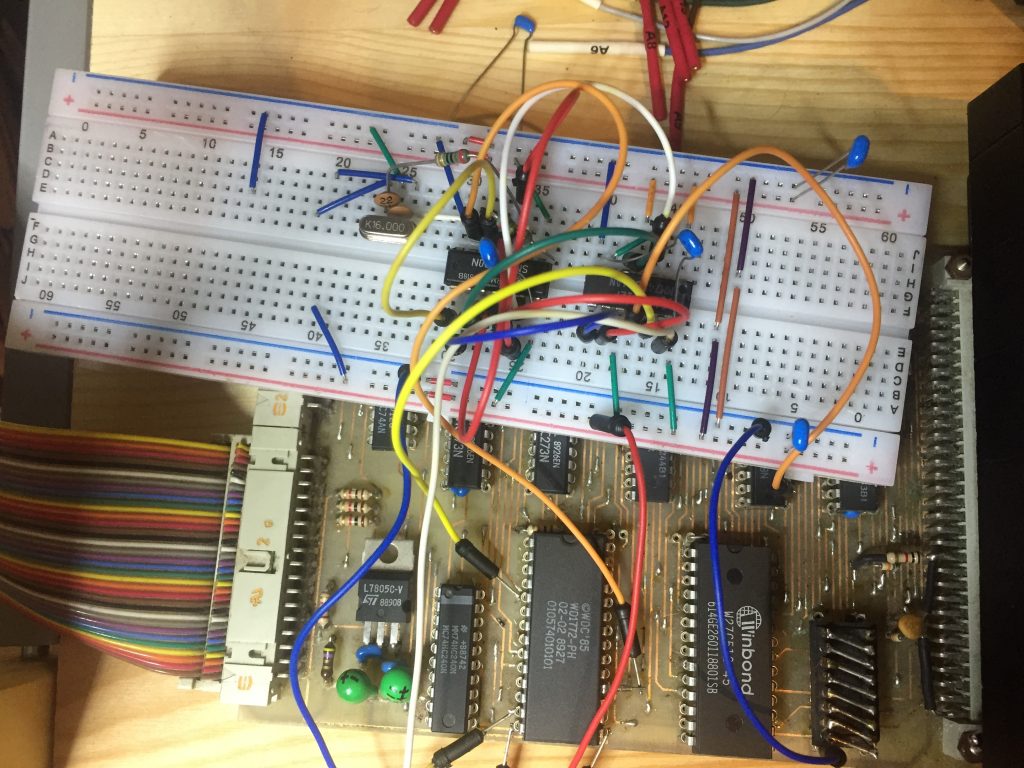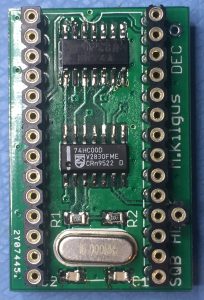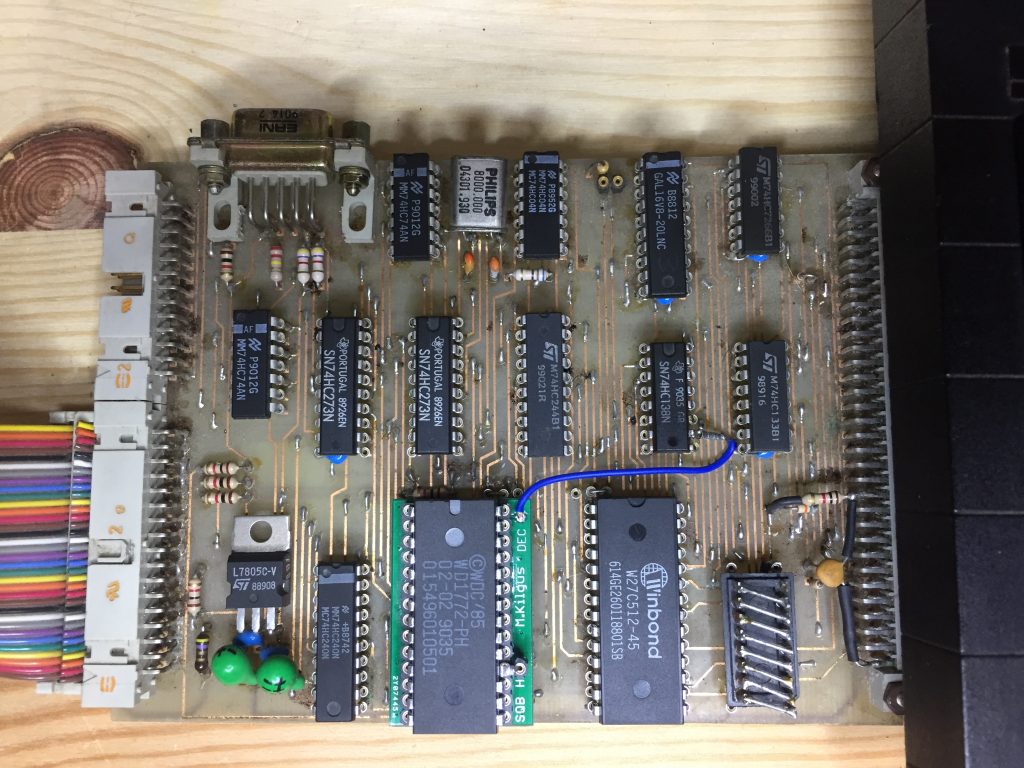A few years ago I got my old QL system out of storage and into working condition, but after 20 years of using QPC I completely forgot how much of a pain it really was. I never owned any of the Gold Cards, in fact all my BBQL hardware (640KB internal memory expansion, a 192kb battery powered static RAM-disc card (“MOS-Card”) and a Sandy SuperQBoard clone) were all hand-built by my late father, together with his work colleague Jochen Hassler (he jokingly called the Sandy clone “Herbert” card in the source and documentation, after my father).
Two major points I didn’t remember was how painfully slow the QL was and also that my setup could only read and write DD discs. Regarding the later point I found schematics of a HD capable version years ago, also designed by Jochen, and I went and checked them out. Though it’s not much, it took me a while to find all the differences in the schematics and understand what they did (remember, I’m not a hardware person!). I started to design some “upgrade board”, but many months passed without doing much of it and eventually I was able to buy one of the new Tetroid Gold Card clones (finally! Not the SGC I hoped to get one day, but at least progress 😉 ), so both of my problems were solved in principle (if only my QL-SD worked with it, but that is a topic for another time).
But the idea of a hardware upgrade for my old and trusty Sandy card still intrigued me and after Christmas I said “what the hell” and just tried it. This was the prototype:
 And believe it or not, despite all the noise and the inherent problems with this solution it still worked 🙂 Not from the get go, there were some connection problems, but eventually. So I went back to my PCB design. Originally it was supposed to be a little board that can be fit somewhere on the Sandy board with lots wires to different parts of the board, but after realizing that almost all signals I need are already available on the WD1772 pins I designed it as an intermediate board between the controller board and the chip. In fact there is only a single additional line needed, the signal that ultimately selects between DD and HD, everything else is neatly handled by the design. So two days before new years eve I sent it to China for manufacturing and only 4(!!!) days later I got this back (shoddy soldering all mine):
And believe it or not, despite all the noise and the inherent problems with this solution it still worked 🙂 Not from the get go, there were some connection problems, but eventually. So I went back to my PCB design. Originally it was supposed to be a little board that can be fit somewhere on the Sandy board with lots wires to different parts of the board, but after realizing that almost all signals I need are already available on the WD1772 pins I designed it as an intermediate board between the controller board and the chip. In fact there is only a single additional line needed, the signal that ultimately selects between DD and HD, everything else is neatly handled by the design. So two days before new years eve I sent it to China for manufacturing and only 4(!!!) days later I got this back (shoddy soldering all mine):
 Of course in my enthusiasm I forgot to include the decoupling capacitors for the two chips, but with the short lines, a huge ground plane on the bottom and the WD1772 capacitor so close-by it apparently doesn’t make any difference. So after all this time and effort this is what the result looks like and what can I say, it works like a charm:
Of course in my enthusiasm I forgot to include the decoupling capacitors for the two chips, but with the short lines, a huge ground plane on the bottom and the WD1772 capacitor so close-by it apparently doesn’t make any difference. So after all this time and effort this is what the result looks like and what can I say, it works like a charm:
 Interestingly the same board could potentially be used to upgrade a TrumpCard, in this case however changes to the PAL and an upgraded TrumpCard driver would be needed, too. Unfortunately I currently don’t have any TrumpCard sources, even though considering that both use a WD1772 chip the difference to the Sandy driver should not be that great. The Sandy HD driver itself is a prototype that was also never released into the wild, I think, and it is unfortunately too big to still fit into 16kb (as it includes the ATR device), so combining it with TK2 is somewhat of a challenge. But then, nobody who every combined these two (except TT) had the sources before 🙂 So, let’s see what the future might bring…
Interestingly the same board could potentially be used to upgrade a TrumpCard, in this case however changes to the PAL and an upgraded TrumpCard driver would be needed, too. Unfortunately I currently don’t have any TrumpCard sources, even though considering that both use a WD1772 chip the difference to the Sandy driver should not be that great. The Sandy HD driver itself is a prototype that was also never released into the wild, I think, and it is unfortunately too big to still fit into 16kb (as it includes the ATR device), so combining it with TK2 is somewhat of a challenge. But then, nobody who every combined these two (except TT) had the sources before 🙂 So, let’s see what the future might bring…
Anyway, this was my little quest, thanks for reading and a happy new year!